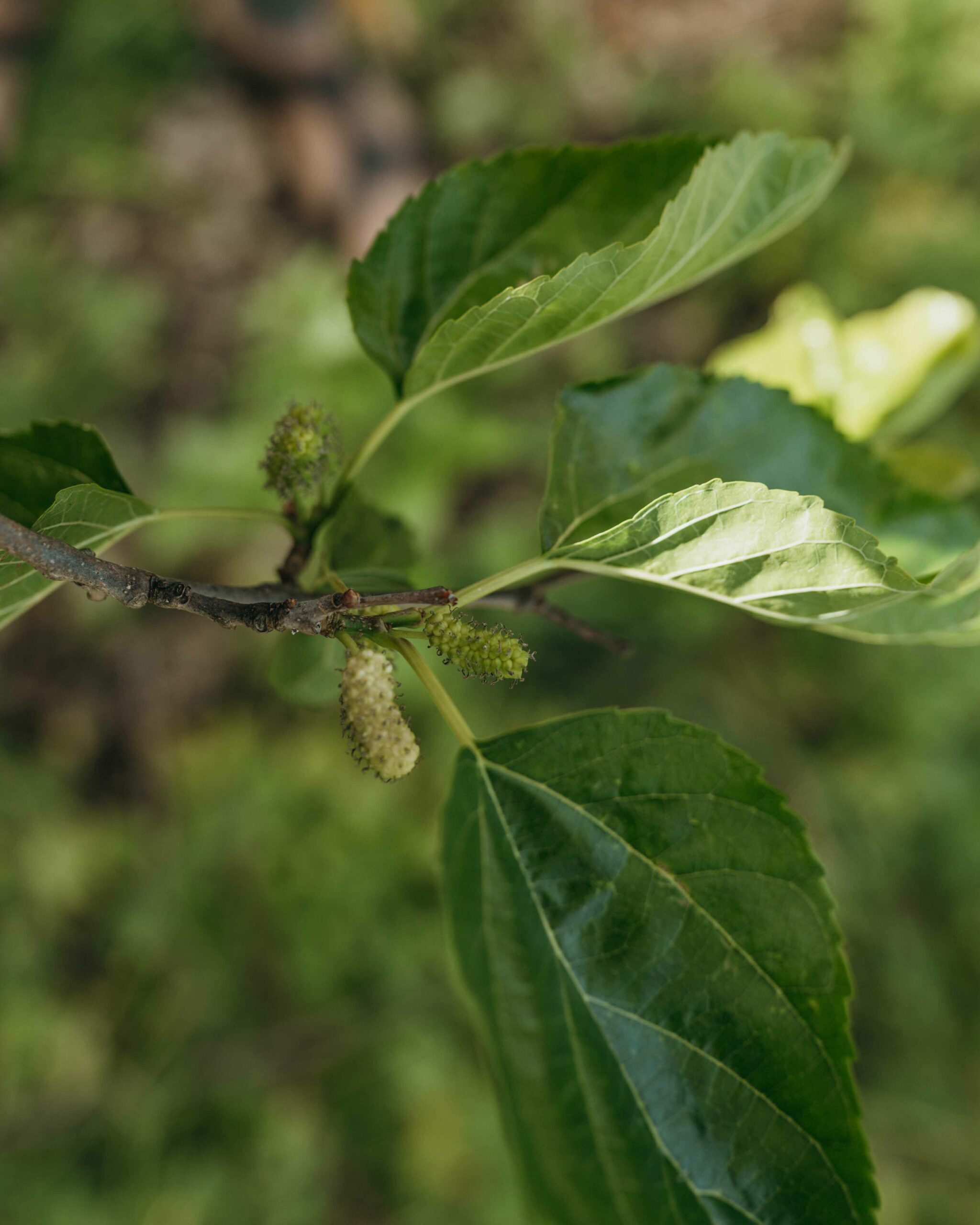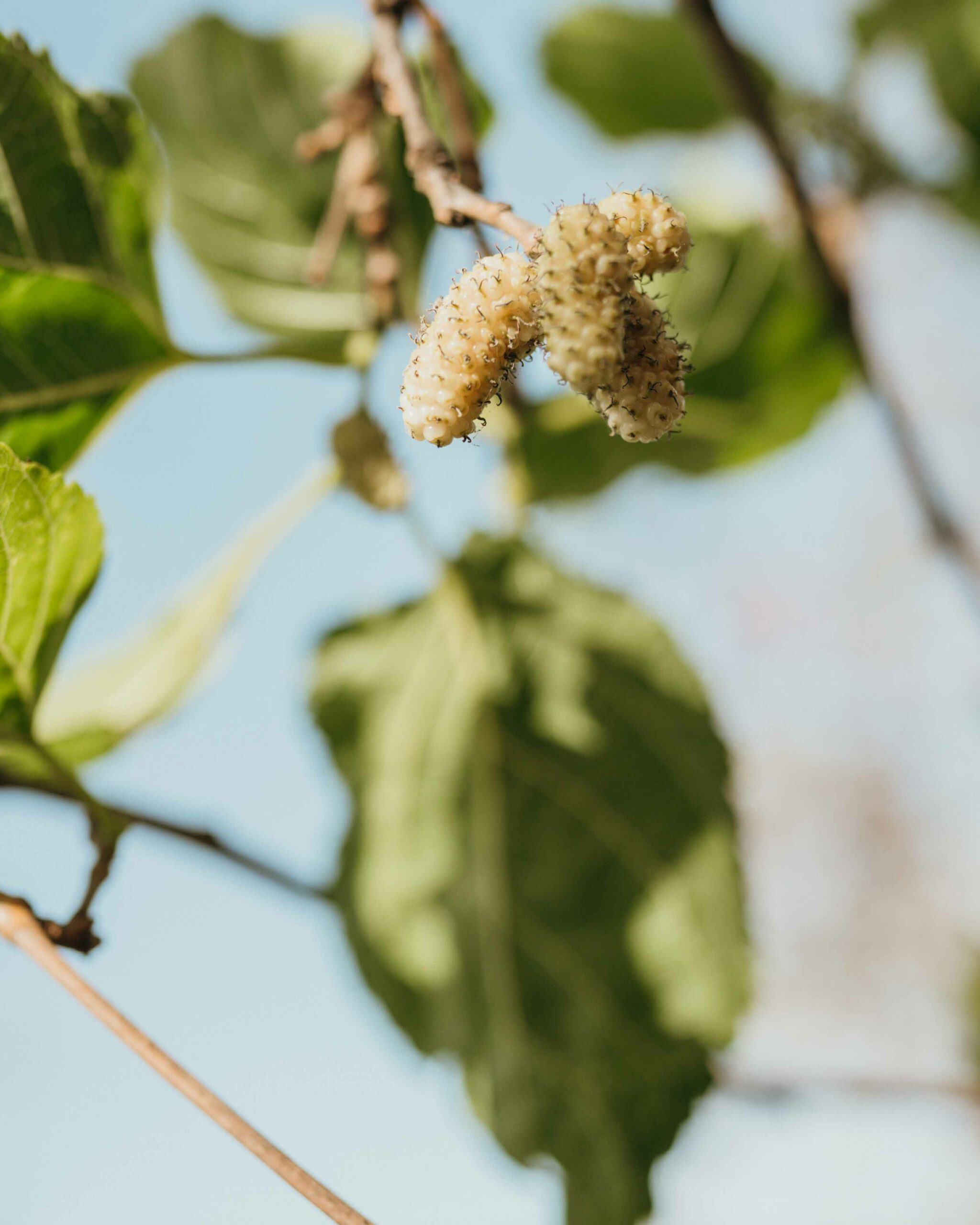Morus alba
Weisse Maulbeere
Englische Bezeichnung: White Mulberry
Spanische Bezeichnung: Morera
Familie
Maulbeergewächse (Moraceae)
Hauptbestandteile:
Mineralstoffe: Kalium
Vitamine: B-Vitamine, E, C,
Sekundäre Pflanzenstoffe: Antioxidantien (Resveratrol)
Ernte-Hinweise:
Reif sind die Früchte, wenn sie von selbst vom Baum fallen. Gut zu erkennen ist das am Boden unter dem Baum.
Verwendung:
-
Frucht: im Porridge, Obstsalat, Salat, Dessert, ….
Die Maulbeere gehört zu den ältesten Kulturpflanzen der Welt. Sie wurde im asiatischen Raum schon vor vielen tausend Jahren angebaut und genutzt. Im 12. Jahrhundert kam sie nach Europa. Die Blätter des Maulbeerbaumes sind die einzige Nahrung, welche die Seidenraupe nicht verschmäht und so benötigte man damals zum Züchten dieser Tiere Maulbeerbäume in größerer Zahl.
Family
Mulberry family (Moraceae)
Main components:
Minerals: Potassium
Vitamins: B vitamins, E, C,
Secondary plant substances: antioxidants (resveratrol)
Harvesting guide:
The fruits are ripe when they fall from the tree by themselves. This is easy to see on the ground under the tree.
Use:
-
Fruit: in porridge, fruit salad, salad, dessert, ….
The mulberry is one of the oldest cultivated plants in the world. It was already cultivated and used in Asia many thousands of years ago. It came to Europe in the 12th century. The leaves of the mulberry tree are the only food that the silkworm does not disdain and so mulberry trees were needed in large numbers to breed these animals.
Familia
Morera (Moraceae)
Componentes principales:
Minerales: Potasio
Vitaminas: Vitaminas del grupo B, E, C
Sustancias vegetales secundarias: antioxidantes (resveratrol)
Guía de recolección:
Los frutos están maduros cuando caen solos del árbol. Esto es fácil de ver en el suelo bajo el árbol.
Uso:
-
Fruta: en gachas, macedonia, ensalada, postre, ….
La morera es una de las plantas cultivadas más antiguas del mundo. Ya se cultivaba y utilizaba en Asia hace muchos miles de años. Llegó a Europa en el siglo XII. Las hojas de la morera son el único alimento que el gusano de seda no desdeña, por lo que se necesitaban moreras en grandes cantidades para criar estos animales.









































